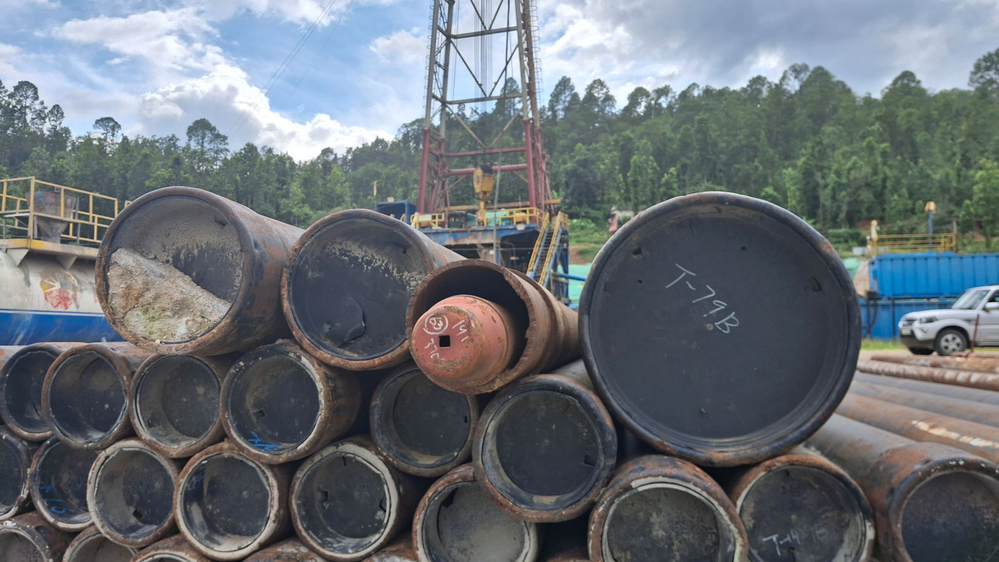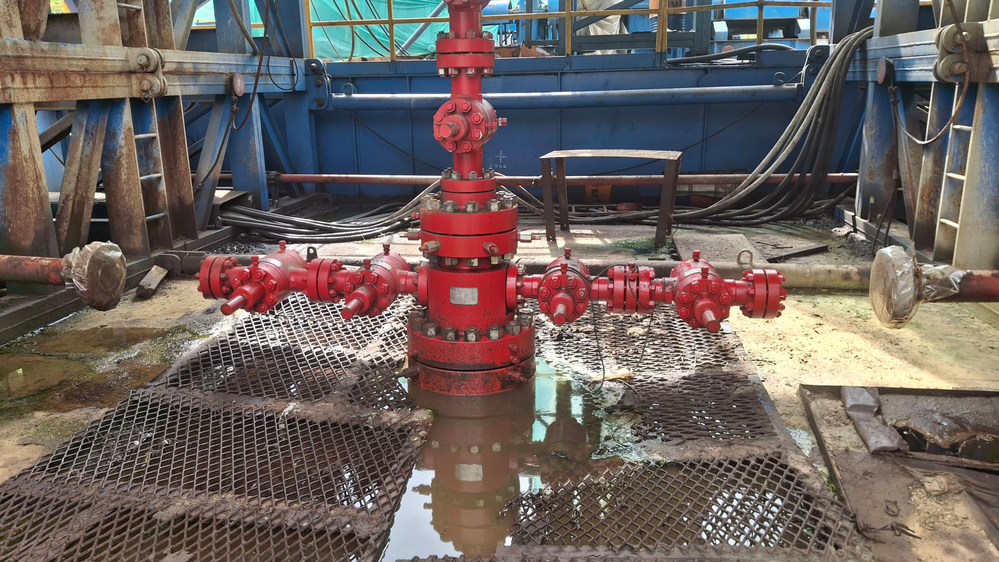National
Gas discovery in Dailekh sparks jobs and energy security hopes
Nepal awaits China’s final report on methane before starting production-phase testing.
Bimal Khatiwada
Jaljale, located in ward 1 of Bhairabi Rural Municipality, about nine kilometres from Dailekh district headquarters, is getting a lot of attention following the discovery of natural gas. Located along the Mid-Hill Highway, the area is now cordoned by the Armed Police Force. Despite the restrictions, travellers frequently stop to take photos and videos, even though the site has been largely inactive over the past eight months.
A preliminary study in June found an estimated 112 billion cubic metres of natural gas in Dailekh, a hill district of Karnali province, potentially marking a significant step in Nepal’s search for domestic energy sources.
Locals are calling for swift development of the project and prioritisation of the locals for jobs. “The land has been handed over; now it should bring development. Even if it meant we would have to live like squatters, the area should have been developed now,” said 66-year-old Dhirja Thapa. She added that new factories and businesses in the area could benefit her children and grandchildren. Many residents emphasise that natural gas production should be fast-tracked to create local jobs.
After discovering natural gas, the Department of Mines and Geology began studies at the site in 2019. According to Prakash Luintel, a geologist at the Petroleum Exploration Project Office, over 4,013 cubic metres of drilling has been completed. The study was carried out in collaboration with the Chinese government, which provided financial and technical support for exploration across Nepal’s mineral-rich regions. China’s CNPC Xibu Drilling Engineering Company Limited had conducted the drilling.
“We are now waiting for the final report, expected by the end of 2025. We have also formally requested the Chinese government for production-phase testing,” Luintel said, adding that further details will be available after discussions in China.
“Preliminary exploration confirms the presence of natural gas, marking the first time such volumes have been detected at this depth in Nepal,” Luintel said. He said the find is methane gas, not crude oil. The next step is to assess storage capacity and gas properties to determine production feasibility.

The Chinese government has invested around Rs2.5 billion in the project. After drilling, samples were sent to China for analysis in late December. Preliminary reports estimate 112 billion cubic metres at a single site, with three additional reservoirs identified, potentially supplying the country for 50 years.
Badrinath Gaire, chief district officer of Dailekh, said a team from the Ministry of Industry, Commerce and Supplies recently visited the site for study. While all necessary equipment has been installed, no further work has been carried out pending the final report.
A four-member study committee, comprising senior geologists, chemical engineers from the ministry, and engineers from Nepal Oil Corporation, has completed an on-site assessment.
Chandika Prasad Bhatta, executive director of Nepal Oil Corporation, said the study committee will determine whether the methane gas can be used for cooking, transport, or chemical fertiliser production. Based on the committee’s report, the government will designate an agency to manage its commercial use.
Cooking gas is the top priority to reduce liquefied petroleum gas imports, which cost Nepal around Rs28 billion annually, including roughly Rs6 billion in transport expenses. Domestic methane production could save the country billions of rupees.

Bhatta added that methane gas has higher pressure than LPG and can be distributed through pipelines or high-pressure cylinders for industrial use. The government also plans to establish a chemical fertiliser plant to cut import costs of around Rs28 billion a year. He said, “Cooking gas will be the first priority. Afterwards, we will focus on transport. Besides these, methane gas can also serve many other purposes.”
Jitendra Basnet, joint secretary and spokesperson for the Ministry of Industry, Commerce and Supplies, said the first exploration phase is complete, with preliminary reports confirming methane gas. The second phase involves production testing, for which the government has sought China’s support.
Testing is expected within three months of the preliminary report. Commercial production will take longer, as technical assessments, cost evaluations, and decisions on production and distribution methods—including pipelines and processing—are needed.
Locals who provided land for exploration have received compensation, and additional land needed for production will be similarly acquired, Basnet said.
The government is coordinating with Chinese technical teams to support production. Final commercial output will depend on further studies of the optimal production model and cost-benefit analysis, he said.
Once developed, the Jaljale site could supply domestic cooking gas, reduce LPG imports, support transport and industrial use, and provide raw material for chemical fertiliser production, offering significant economic benefits for Nepal.
XXXX
PHOTO:




 16.2°C Kathmandu
16.2°C Kathmandu







%20(1).jpg&w=300&height=200)






